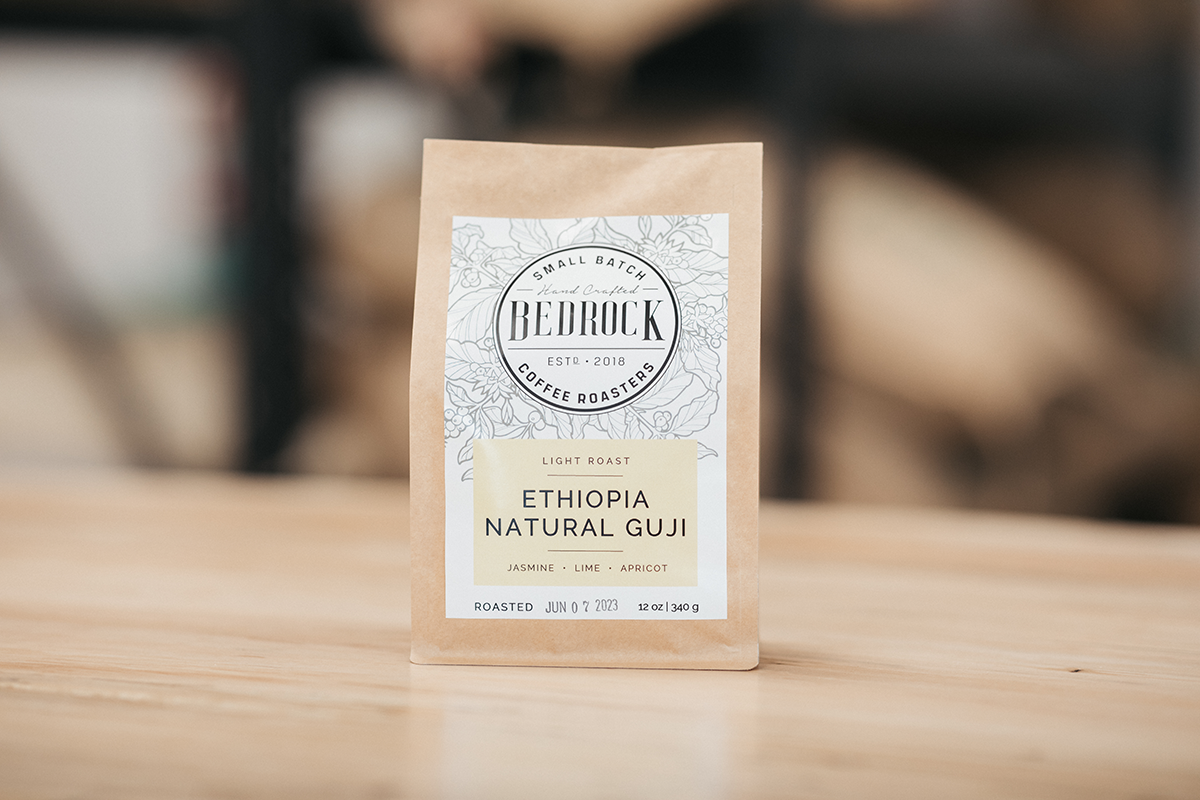NOW AVAILABLE HERE!
The Heritage and Landscape of Ethiopian Coffee
When we think about coffee, few of us consider its ancient roots and the enduring traditions behind each cup. Ethiopia, the birthplace of Arabica coffee, carries a legendary status, known for its deep history and a coffee culture that transcends centuries. This is the land where coffee is not just a cash crop introduced by colonization, but an integral part of everyday life, evolving from wild trees in the forests to cherished 'coffee gardens'.
Our latest coffee offering is an embodiment of this rich heritage. Introducing our new coffee from the Guji region of Ethiopia, a place that has been crafting its own coffee narrative. Once considered part of Sidama, Guji emerged in the early 2000s as its own distinct region, flourishing in its unique geography and cultural practices. Nestled in southern Ethiopia, Guji is adorned with lush forests and highlands graced with rich red soil, ideal for growing coffee.
Cultivation and Processing: From Cherry to Bean
The coffee beans are grown at an altitude of 1900-2200 meters above sea level, where the thin air and cool climate slow down the maturation of the coffee cherries, resulting in a denser bean packed with nuanced flavors. The beans, cultivated by smallholder farmers, are a mixture of native heirloom varieties. They are the fruits of labor, love, and legacy, born from the hands of growers whose lives are deeply intertwined with the fate of the coffee they nurture.
The coffee beans from these highland gardens find their way to the Derhi Fahmi washing station. Named after the first son of Testi's founder and CEO, Mr. Faysel Abdos, this washing station serves as a central hub for hundreds, sometimes thousands, of small-scale producers delivering their cherries during the harvest season. The process involves meticulous sorting, washing, and natural drying on raised beds, with the drying process taking anywhere from 8 to 25 days, depending on the weather. For more information on the variety of coffee processing methods, check out An Overview of Coffee Processing Methods.
The Guji Experience: A Taste Journey
This natural process is where the magic happens. It's here that the coffee beans, still wrapped in their protective fruit layer, slowly dry under the Ethiopian sun, absorbing the sweetness of the cherry, lending a unique depth and complexity to the beans.
The result? A coffee that sings with the spirit of Guji. A light and gentle roast preserves as much of the coffee's origin flavors as possible. As you take your first sip, notes of jasmine unfold, an aromatic welcome that beckons the taste buds. As the coffee cools, a bright lime acidity emerges, balanced by the rich, stone fruit sweetness of apricot. It's a profile that mirrors the vibrant landscapes and the rich cultural tapestry of Guji itself.
Sustainable Practices, Traceability, and Our Commitment
However, what truly sets this offering apart is the intricate dance between human and nature that plays out in every cup. From the red highland soil nourishing the coffee trees to the farmers tending to their gardens without the aid of fertilizers or pesticides, each element contributes to the coffee's distinctive taste profile.
Traceability may be a challenge given the communal nature of coffee production in Ethiopia, but we're committed to sourcing coffee from the same washing stations each year, ensuring consistency in quality and taste. In a sense, while you may not know the specific garden your coffee cherry came from, you are tasting the combined efforts and shared passion of a community.
In every sip of this Guji coffee, you are not merely tasting coffee—you are journeying to its birthplace, experiencing a time-honored tradition, and participating in a communal labor of love. This is the beauty of Ethiopian coffee, and we're excited to bring this experience to your cup. Join us in this journey and savor the notes of jasmine, lime, and apricot, a symphony of flavors that tell a story of a land, its people, and their cherished coffee.


